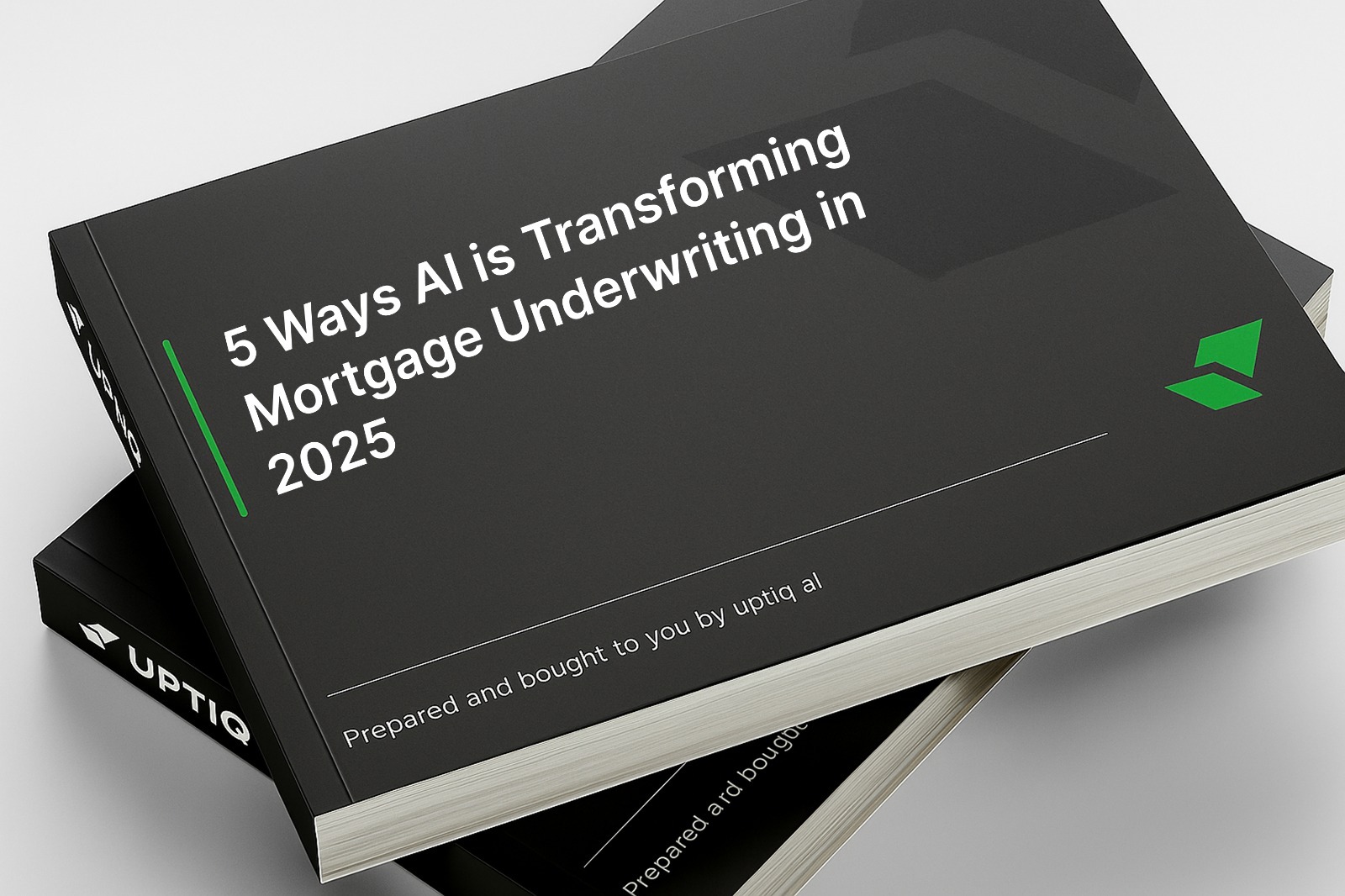The Psychology of Lending: Why Advisors Avoid Loan Conversations
Resource
-
Resource


The mortgage industry has always been data-heavy and process-driven, requiring underwriters to analyze countless documents, assess risk profiles, and ensure compliance. Traditionally, this has meant lengthy approval timelines and high operational costs. But in 2025, the story is changing dramatically. AI in mortgage underwriting is revolutionizing the way lenders process applications, assess borrower eligibility, and deliver decisions—all while improving accuracy and customer experience.
As the adoption of automated mortgage solutions accelerates, here are five key ways AI is reshaping mortgage underwriting in 2025.
One of the most time-consuming tasks in mortgage underwriting is gathering, verifying, and analyzing applicant documents—tax returns, pay stubs, bank statements, and credit histories. Traditionally, this manual process is prone to human error and can stretch approval timelines.
AI-powered document recognition and natural language processing (NLP) tools now automate much of this work. They can extract relevant data, flag inconsistencies, and validate against external databases in real time. For lenders, this means faster decisions and lower administrative costs. For borrowers, it means approvals in days—not weeks.
SEO impact: “automated mortgage solutions” that streamline document handling are among the top AI-driven innovations gaining adoption in 2025.
Risk evaluation is at the heart of mortgage underwriting. Traditionally, lenders relied on static scoring models that emphasized credit scores, income-to-debt ratios, and employment history. While effective, these models often fail to account for nuanced borrower profiles.
AI is bringing a more holistic view. Machine learning models can analyze hundreds of variables—from spending patterns and gig-economy income streams to regional economic indicators—to produce more accurate risk assessments. By incorporating alternative data sources, AI in mortgage underwriting allows lenders to responsibly extend credit to underserved borrowers without compromising on risk management.
Fraudulent applications remain a significant challenge for mortgage lenders, costing billions annually. Conventional fraud checks often focus on obvious red flags, leaving subtle anomalies undetected.
AI-driven anomaly detection systems can identify unusual patterns across massive datasets. For example, AI can flag inconsistencies between a borrower’s stated income and transaction history, or detect duplicate use of identification across multiple applications. By learning from past fraud attempts, these models continuously improve, protecting both lenders and borrowers from financial risk.
The mortgage sector is one of the most heavily regulated areas of financial services. Compliance with requirements such as Know Your Customer (KYC), Anti-Money Laundering (AML), and consumer protection laws is non-negotiable. But manual compliance checks can be resource-intensive and error-prone.
AI is changing the game by automatically monitoring underwriting decisions for compliance alignment. Automated audit trails ensure every decision is documented and justifiable. In 2025, regulators are increasingly supportive of automated mortgage solutions because they improve transparency and reduce systemic risk. For lenders, this means fewer penalties and stronger trust with both regulators and customers.
Today’s borrowers expect speed, transparency, and personalization. AI makes this possible by tailoring the underwriting process to individual borrower profiles. For instance, an AI system can pre-approve a customer for a specific loan product based on real-time financial behavior, or proactively recommend refinancing options when interest rates drop.
This personalization not only improves customer satisfaction but also increases lender competitiveness in a crowded marketplace. In 2025, AI in mortgage underwriting is no longer just about efficiency—it’s about creating a borrower-centric experience that builds loyalty.
The rise of AI in mortgage underwriting is more than a technological upgrade—it’s a competitive necessity. Lenders adopting automated mortgage solutions are reducing operational costs, mitigating risks, and improving customer engagement. Those who lag risk being outpaced by agile, AI-powered competitors who can deliver approvals faster, more accurately, and with greater transparency.
Platforms like Uptiq.ai are helping financial institutions strike this balance—combining the efficiency of automation with the flexibility of custom-built AI agents. This ensures that lenders don’t just digitize old workflows, but reimagine underwriting for the future.
Mortgage underwriting has always been about balancing speed, accuracy, and compliance. In 2025, AI is redefining how that balance is achieved. By automating document processing, enhancing risk models, detecting fraud, ensuring compliance, and delivering personalized borrower journeys, AI is not just improving underwriting—it’s transforming it.
For lenders, the message is clear: the future belongs to those who embrace AI-driven innovation. By leveraging AI in mortgage underwriting and investing in automated mortgage solutions, financial institutions can create a faster, safer, and more inclusive mortgage ecosystem.
RELATED